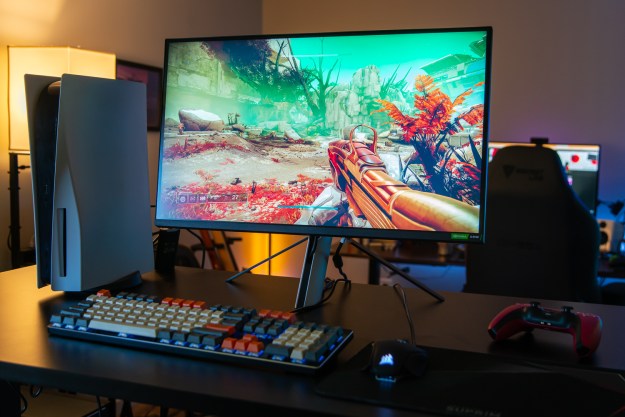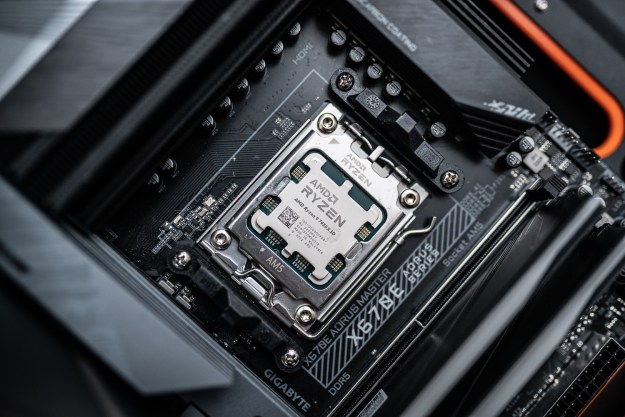The continued GPU shortage shows that gaming PCs continue to be a hot commodity during the global health pandemic. But not all PCs are built the same, as some are proving to be hotter than others — and that’s definitely not a good thing if you’re case maker NZXT. The company has been hearing from gamers concerned about its H1 case, which has literally been catching fire due to a faulty design.
The fire issue stemmed from a faulty case design where there isn’t enough vertical clearance for the 12-volt power plane, which could cause the initial metal mounting screws to puncture the PC riser cable and short circuit the PC board, posing a fire hazard. The issue was highly publicized in the gaming community, and a YouTube video posted by Mark’s Tech — embedded below — showed the NZXT catching fire as a result of this poor design.
As an early fix — and a stopgap one at best — NZXT replaced the metal screws with nylon ones to mitigate any puncture risk that could result in the board short circuiting and creating a fire hazard. However, the initial fix of replacing metal screws with nylon ones was unacceptable as a long-term solution, as Gamers Nexus noted that PC builders and tinkerers could mistakenly replace the nylon screws with metal ones after they disassemble the case to replace, upgrade, or repair any internal components. Additionally, even if metal screws weren’t mistakenly used as part of the upgrade process, the nylon screws still could puncture the board over time, the publication pointes out to NZXT.
After a lot of pressing by Gamers Nexus, NZXT subsequently admitted to the design flaw, noting that it has also been working with U.S. regulators since November 2020.
“The nylon screws were not the complete solution for the H1 fire hazard; they didn’t address the root cause of the issue,” NZXT CEO Johnny Hou admitted in a statement, apologizing to gamers for the flaw in design. “We didn’t account for scenarios where someone could replace the nylon screws with metal ones unknowingly. Our execution did not live up to the quality that our community has come to expect from us.”
H1 sales halted until permanent fix arrives

As a way to rectify the situation, Hou claimed the company will send out “redesigned PCIe Gen3 Riser Assemblies for current H1s and we’re going to help with installation for those who need it.” He also added that the H1 case would be removed from the NZXT store and won’t be offered as an option on a prebuilt NZXT BLD gaming PC.
According to NZXT, if you own an H1 case and had previously requested replacement nylon screws for the initial metal screws, then the company will automatically send you a new kit. If you’ve never requested replacement screws, you can fill out a form to get the new risers, and we would recommend doing this sooner than later due to the fire hazard posed by the current design. NZXT claims that the new PCIe Riser Assembly will be shipping at the end of March.
Alternatively, if you purchased your H1 direct from NZXT, the company said that you can request a full refund. If you purchased it from another retailer, you’ll have to contact that merchant to see if a refund is possible.
It looks like the company has stopped shipping the H1 cases until a permanent fix can be implemented. Even though the H1 case is still listed on NZXT’s online store, neither the matte white nor the matte black variants are available for purchase, with NZXT showing a “not available” button to potential buyers looking to add the case to their shopping carts. The H1 normally retails for $349.
On the prebuilt gaming desktop side, the situation is similar, and NZXT BLD’s site prominently displays a link to Hou’s message at the top to alert potential buyers of the safety issue. Configurations for a prebuilt H1 Mini PC start at $1,999, according to the company’s site.
This would be the second time that the company have halted sales of the H1. The company had to stop sales of the H1 previously when it implemented the nylon screws as a potential fix.
“Going forward, we’re instituting more robust and thorough design processes,” Hou said. “From the initial designs, QA, to additional testing, we’re committed to quality in both our products and our response to your concerns.”
Given that its taken so long for NZXT to be forthcoming about the issue despite working with the Consumer Product Safety Commission for three months, it may take the company a while to recover from any brand damage. For comparison, Samsung’s swift actions after the Galaxy Note 7’s exploding battery debacle helped the smartphone maker’s brand survive relatively unscathed.
Editors' Recommendations
- This PC case has a touchscreen, but it’s way more than a gimmick
- NZXT’s H510 PC case brings style and sophistication to your custom gaming rig


